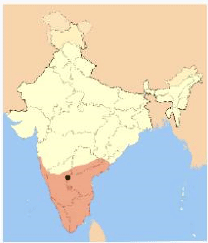The Vijayanagar Empire - History, UPSC - Class 12 PDF Download
Need a document on vijaynagar?
Ref: https://edurev.in/question/489249/Need-a-document-on-vijaynagar-
The Vijayanagara Empire (also called Karnata Empire, and the Kingdom of Bisnegar by thePortuguese) was based in the Deccan Plateau region in South India_ It was established in 1336 by Harihara I and his brother Bukka Raya I of Sangama Dynasty. The empire rose to prominence as a culmination of attempts by the southern powers to ward off Islamic invasions by the end of the 13th century. It lasted until 1646, although its power declined after a major military defeat in 1565 by the combined armies of the Deccan sultanates. The empire is named after its capita! city of Vijayanagara, whose ruins surround present day Hampi, now a World Heritage Site in Karnataka, India. 1 The writings of medieval European travelers such as Domingo Paes, Fernao Nunes, and Niccold Da Conti, and the literature in local languages provide crucial information about its history Archaeological excavations at Vijayanagara have revealed the empire s power and wealth.
Vijayanagara Empire
1336-1646

Extent of Vijayanagara Empire. 1446,1520 CE
| Capital | Vijayanagara, Penukonda, Chandragirl111 |
| Languages | Kannada, Telugu, Sanskrit |
| Religion | Hinduism |
| Government | Monarchy |
| King | |
| 1336-1356 | Harihara Raya |
| 1642-1646 | Sriranga III |
| History | |
| Established | T336 |
| Earliest records |
1343 |
| Disestablished | 1646 |
| Currency | Varaha |
| Preceded by | Succeeded by |
| Hoysala Empire Kakatiya dynasty Madurai Sultanate |
Kingdom of Mysore Nayakas of Keladl Thanjavur Nayak kingdom Madurai Nayak dynasty |
| Vijayanagara Empire | |
| Sangama dynasty | |
| Harihara l | 1336-1356 |
| Bukka Raya I | 1356-1377 |
| Harihara Raya li | 1377-1404 |
| Virupaksha Raya | 1404-1405 |
| Bukka Raya II | 1405-1406 |
| Deva Raya ! | 1406-1422 |
| Ramachandra Raya | 1422 |
| Vira Vijaya Bukka Raya | 1422-1424 |
| Deva Raya II | 1424-1446 |
| Mallikarjuna Raya | 1446-1465 |
| Virupaksha Raya II | 1465-1485 |
| Praudha Raya | 1485 |
| Saluva dynasty | |
| Saluva Narasimha Deva Raya | 1485-1491 |
| Thimma Bhupata | 1491 |
| Narasimha Raya fl | 1491-1505 |
| Tuluva dynasty | |
| Tuluva Narasa Nayaka | 1491-1503 |
| Vira Narasimha Raya | 1503-1509 |
| Krishna Deva Raya | 1509-1529 |
| Achyuta Deva Raya | 1529-1542 |
| Venkata I | 1542 |
| Sadasiva Raya | 1542-1570 |
| Aravidu dynasty | |
| Aliya Rama Raya | 1542-1565 |
| TirumalaDeva Raya | 1565-1572 |
| Sriranga I | 1572-1586 |
| Venkata II | 1586-1614 |
| Sriranga I! | 1614 |
| Rama Deva Raya | 1617-1632 |
| Venkata III | 1632-1642 |
| Sriranga III | 1642-1646 |
The empire's legacy includes many monuments spread over South India, the best known of which is the group at Hampi. Different temple building traditions in South and Central India came together in the Vijayanagara Architecture style. This synthesis inspired architectural innovation in Hindu temples' construction. Efficient administration and vigorous overseas trade brought new technologies such as water management systems for irrigation. The empire's patronage enabled fine arts and literature to reach new heights in Kannada, Telugu, Tamil, and Sanskrit, while Carnatic music evolved into its current form. The Vijayanagara Empire created an epoch in South Indian history that transcended regionalism by promoting Hinduism as a unifying factor.
FAQs on The Vijayanagar Empire - History, UPSC - Class 12
| 1. What was the significance of the Vijayanagar Empire in Indian history? |  |
| 2. Who were the prominent rulers of the Vijayanagar Empire? |  |
| 3. What were the major achievements of the Vijayanagar Empire? |  |
| 4. What led to the decline of the Vijayanagar Empire? |  |
| 5. How did the Vijayanagar Empire contribute to the spread of Hinduism? |  |



















